The Lesothosaurus |
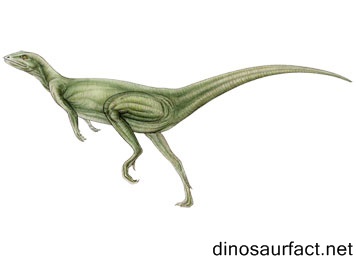 Lesothosaurus- the Bird Footed Dinosaurs Lesothosaurus had a very near relation with the Fabrosaurus. It got its name from the country in Africa where it was found. It was found in Lesotho , so it got its name Lesothosaurus. Lesotho means lizard so it was like lizards. It is said by the researchers that it was a member o the “bird-footed” ancestors also known as Ornithopod. It was God's creations, which were made to surf around and run away whenever it needed to protect itself. Its back or hind legs were too strong and had three major claws. Plus it had an additional small claw in the high shin. It had four fingers in small hands and a bump like thumb. Lesothosaurus is like Fabrosaurus. It was of 3 feet long. It existed for more than 200 million years ago. Researchers and paleontologists say that these dwelled in the late Triassic era. Lesothosaurus had narrow teeth not like its close kins. Its frontal teeth were smooth and shiny along with sharpness. It looked like notched arrow heads. As it was the member of the “bird footed” ancestors or ornithopod, few of the other small dinosaurs were thought to belong of the same group. It had created some misconceptions about the small dinosaurs. It is said that it lived for minimum 70 million years before they died. In the long run, more powerful “bird hips” came to existence and eventually they were on extinction. Lesotho was found in Lesotho , Venezuela . It was herbivorous or low growing plants were its food. Its length was 1 m. Their lifestyle is considered in today's world as “day gazelles” that used to dwell and surf. They used to look for their food and used to be scared of their environment for danger. They use to escape from their predators when they would be near to them. They were very meek creatures who used to run for their lives when sensed danger. These Lesothosaurus had very little head with large eyes. They had an elongated body and a 3 feet tail. Its mouth was tipped with a sharp beak. It had long muscular legs; hollow bones which were light weighed and would outsmart most of its predators by running. It is considered as the most primitive dinosaur in the ornithischians family. These had two major “armor-plated” species named as “Stegosaurus” and “Ankylosaurus” and the three horned headed “Triceratops”. These Lesothos were small, supple and bipedal which had a bearing of apparently some basic resemblances to the huge quadrupled species of the family. The hip structure and jaws which was designed to eat plants showed a link to the next family kins but they were separate dinosaurs. They evolved in the early Jurassic era. At the first glance, it would seem like a lizard is walking on its strong hind legs. But lizards can ever hold up their head high and walk. They can not even walk on their limbs. Utmost they can crawl. Reading about Lesothosaurus is a magnificent topic. You would come to know about everything they used to do. |
jueves, 31 de diciembre de 2009
The Haplocanthosaurus |
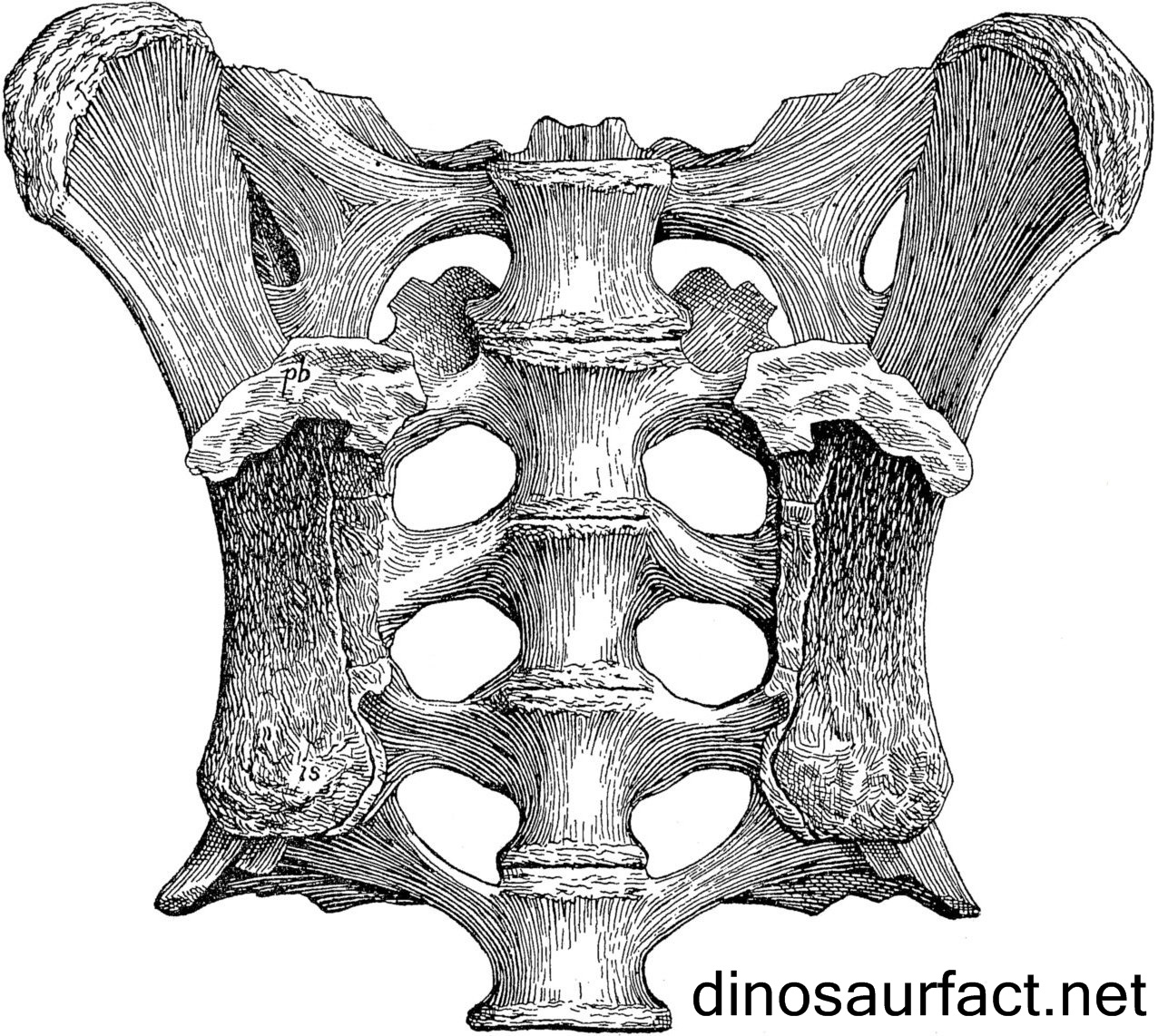 Haplocanthosaurus - the Dwarf Dino of 49 Feet The name Haplocanthosaurus stands for a dinosaur that had simple spine. It lived in this earth between144 to 156 million years ago in the late Jurassic period. This large animal was originally named as Haplocanthus priscus by Bell Hetcher in the year 1901 when the remnants of the body were discovered in Colorado in the US . But as the name Haplocanthus priscus was occupied by some other species Bell named it Haplocanthosaurus instead of Halplocanthus. The meaning of Haplocanthus goes thus, the dinosaur with single spike. In the year 1999 regarding Haplocanthosaurus Jose Bonaparte declared that Haplocanthosaurus differs very much from other sauropods. But they loomed large at different corners of the earth along with large animals. They had a large body and they moved in a slow pace. They needed enough food to meet the need of the metabolism. As a result they had to move frequently in quest of food all the while. The haplocanthosaurus preferred to take plants hence they had no ferocity of their own they were after their own target chewing large branches of trees all the time after their sweet will. Haplocanthosaurus was respectively smaller in size in comparison of the other gigantic creatures. The average height was approximately 14 meters (46 feet) with 14.5 metric tons of weight. It evokes real wonder how such a small creature could cope with its giant counterparts and kept its existence secured amid the fierce ones. Haplocanthosaurus could easily be grouped with the Cetiosaurus much in resemblance with it but according to scientists it may be grouped in a separate manner for it had a structure with advanced vertebra. The scientists classed the little Haplocanthosaurus with the Dicraeosaurus that had the same vertebra structure. But they ruled out the possibility and classed the species with another type of sauropod, the Dicraeosauridae. It was highlighted that Haplocanthosaurus had in common with the Brachiosaurus. But the features were limited to high shoulders, long neck and the short tail. It was nothing but a result of the parallel evolution that took place not through direct relationship with that one. The body parts of he Haplocanthosaurus that were found are a partial skeleton that had no skull. The length of it was 21.5 meters and it weighed about 25 tones. The scientists are of opinion that the Haplocanthosaurus was the last one of the large Cetiosaurids. Though the Cetiosaurus are never related with he Cetiosaurus of England the body parts of the species seem to belong to other sauropods of the referred time. Naturally it comes to the mind of the scientists that the two species lived in the same period but they could not bear the burnt of the mid Tithonian destruction. According to the paleontologists, Haplocanthosaurus was regarded small in comparison with the other giants that went on scavenging the vast tracts of lush green tracts in the Jurassic period. When other Morrison sauropods had a length of about 70 feet, the Haplocanthosaurus was not more than 50 feet with an average weight of 13 metric tons. Two specimens of the dinosaurs came into the limelight so far, one is H.delfsi and the other is H.priscus. |
miércoles, 30 de diciembre de 2009
The Juravenator |
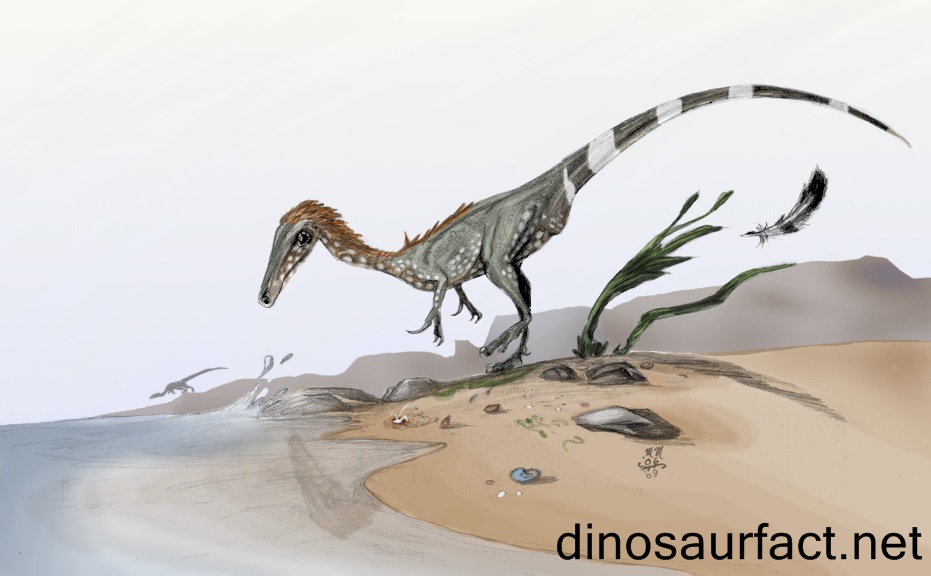 Juravenator – The Beautiful Tiny Dinosaur Juravenator is a type of small ceelurosaurian dinosaur, which was known to have lived in the Jura Mountains of Germany about 150 million years ago. The term Juravenator was derived from the Greek and the meaning of term is Jura Mountains hunter. The term is pronounced as Joor-ah-ven-ate-or. It is known to have belonged to the Jurassic Era. Juravenator is known to have been two feet (i.e.) 70 cm long. It would have weighed around 300 grams. It was found that the food habit of Juravenator would have included insects and fish. Juravenator was regarded as the member of Compsognathidae family, which makes it a close relative of sinocalliopteryx and sinosauropteryx. The fossil evidence of Juravenator showed that it would have had a downy, feather like covering. But, some parts of fossilized Juravenators' skin demonstrate that it would have been a normal dinosaur without any feathers. According to Mark Norell, a paleontologist suggested the following facts about Juravenator: • Like some partially feathered birds, Juravenator might have got feathers in some parts of the body. But, initially it might have had full feathers. • The Juravenator might have lost their feather as they grow up or they might have lost some feathers seasonally. The reports regarding Juravenator differed from initial study and further studies. During the initial study the scientists placed Juravenator under the category of compsognathids. But, later studies showed that Juravenator was not a compsognathids and it belonged to the Maniraptora group. As far as feathers of Juravenators' are concerned, it is not actually known whether they had feathers or not. Juravenators are regarded as the tiniest dinosaur and it belongs to the Animalia kingdom, chordate phylum, reptilia class and saurischia order. Juravenators were called with the nick name ‘borsti'. The skin impression from the tail area of this dinosaur showed that it would have had a scaly hide. The remains of the Juravenator were found from Southern Germany and with the help of these remains, questions were raised among the scientists regarding how feathers evolved from dinosaurs to bird. According to researchers, Juravenator would have had a similar appearance of the fleet-footed carnivorous dinosaurs that troubled a young girl on the beach in the opening scene of the film ‘the lost world' and this type of dinosaur also appeared in the second Jurassic park movie. Some researchers say that the well-preserved bone structure of the Juravenator shows that it would have had feathers like other feathered dinosaurs since all the close relatives of this dinosaur was known to have had feathers. But, some researchers have a different idea that the small patch of skin from the tail of the creature shows no signs of feathers. The second group also argues that the skin of Juravenator is different from other feathered dinosaurs. So, it was feather less. Since the researchers could not arrive at a conclusion regarding the feathers of Juravenator. They concluded that they might have lost their feathers as age advances, initially they might have had feathers, but they might have lost their feathers later. |
The Giraffatitan Brancai |
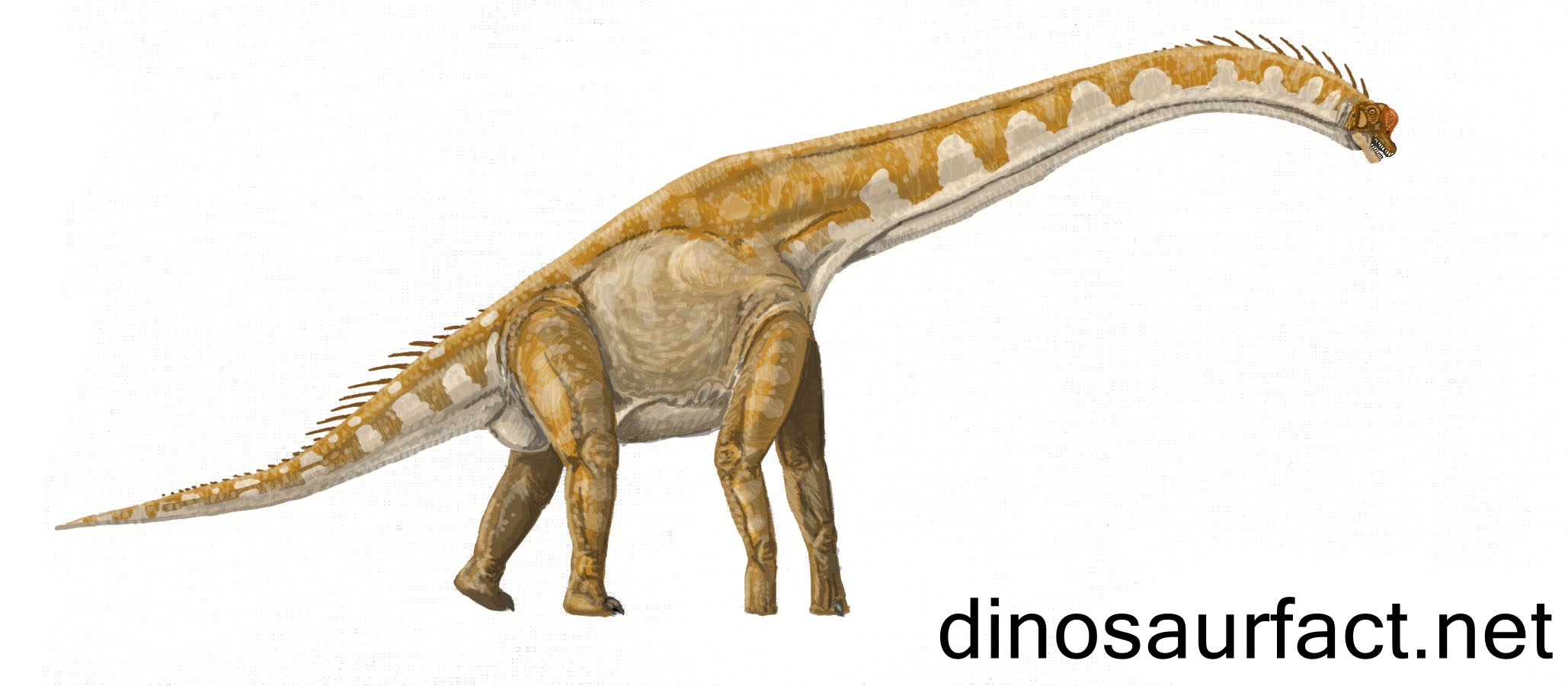 Giraffatitan Brancai is a dinosaur that many people have seen, but many are unaware of the dinosaur. For 70 years it was known as a species of Brachiosaurus, & most illustrations of Brachiosaurus are based on a skeleton of Giraffatitan. Brachiosaurus Altithorax by Elmer Riggs in 1903. Werner Janensch then found a similar fossil in 1914, which he named B. Brancai. In 1988, Gregory Paul realized that B. Altithorax & B. Brancai were not as closely related to each other as previously thought. He elected them to be two subgenera, & in 1917 George Olshevsky proposed B. Brancai to be separated into an entirely new genus, Giraffatitan. It is still widely known as Brachiosaurus, since some argue about the number of differences between fossil finds that necessitate separate genera. Giraffatitan & its family took a decidedly different shape from most Sauropods. Their front legs were taller than their hind legs, indicating that they held their neck upright. This however, poses the question of whether they were warm-blooded or cold-blooded creatures; multiple hearts would have been required to push cold blood up the neck against gravity, but the head was very small, suggesting it could not have a high enough food-intake for a warm-blooded animal, which would only require one heart. |
ZHEJIANGOPTERUS

The term Zhejiangopterus was derived from a Greek word and the meaning of the term is Zhejiang The term Zhejiangopterus was derived from a Greek word and the meaning of the term is Zhejiang wing and the term is pronounced as zhe-zhang-op-ter-us. This creature was known to have lived in the coastal area of Asia, particularly in China , during the cretaceous period about 85 million years ago. Zhejiangopterus was known to be a moderately large pterosaur.
According to researchers Zhejiangopterus would have fed on fish and it would have had a wingspan of about 16 feet. But, the researchers who came in the later years say that it would have got a wingspan of about 3.5m. They also say that it would have got a long head and neck with lack of crest. It belongs to the group of pterosaurs. According to researchers Zhejiangopterus would have got a body that differs from other pterosaurs in such a way that it would not have got any ornamentation on its head like other pterosaurs such as Tupuxuara and Tapejara. It would also have differed from other pterosaurs by its unusually long pointy head, long neck and extra-long legs.
Generally, the fossils of some pterosaurs are rare to find, but researchers have found compound, relatively whole fossils of Zhejiangopterus. The genus got its name from Chinese paleontologists Wei Feng and Cai Zhengguan in the year 1994.
The biological name of this species is Zhejiangopterus Linhaiensis. The term Zhejiang was derived from the place where it is known to have lived, Zhejiang province of China and the term opterus was derived from the Greek term ‘pteron', the meaning of, which is wing. The second term Linhai refers to the city of Linhai of China .
The skull of Zhejiangopterus was initially found in the year 1986 and it was researched by a team of researchers from the Zhejiang Museum of Natural History. Later in the year 1988, a complete skull of Zhejiangopterus was found in the same area.
Later in the early nineties, six more fossils were found from the Tangshang formation. According to researchers, the skull was perfectly arched, it was long, and it also lacked keel or other crest normally found in other related species. The beak was thin, it lacked teeth and it was sharply pointed and thin as well. It would have got elongated cervical vertebrae. Its upper arm bone was double the size of its upper leg bone and it was thin and strong as well. Even though, the wings of Zhejiangopterus were short, they were strong.
Zhejiangopterus was originally classified under the Nyctosauridae family since it possessed edentulous jaws and notarium and it lacked a cranial crest like Nyctosaurus. But, later in the year 1997 a paleontologist named David Unwin, determined that they were closely related to Azhdarchidae.
Zhejiangopterus are scientifically classified under the kingdom of Animalia , under Chordata phylum. They are classified under the class sauropsida and under the order of pterosauria. They are further classified under the suborder pterodactyloidea.
Hope, you might have got the required information about the wonderful species that existed several million years ago called Zhejiangopterus and the term is pronounced as zhe-zhang-op-ter-us. This creature was known to have lived in the coastal area of Asia, particularly in China , during the cretaceous period about 85 million years ago. Zhejiangopterus was known to be a moderately large pterosaur.According to researchers Zhejiangopterus would have fed on fish and it would have had a wingspan of about 16 feet. But, the researchers who came in the later years say that it would have got a wingspan of about 3.5m. They also say that it would have got a long head and neck with lack of crest. It belongs to the group of pterosaurs. According to researchers Zhejiangopterus would have got a body that differs from other pterosaurs in such a way that it would not have got any ornamentation on its head like other pterosaurs such as Tupuxuara and Tapejara. It would also have differed from other pterosaurs by its unusually long pointy head, long neck and extra-long legs.
Generally, the fossils of some pterosaurs are rare to find, but researchers have found compound, relatively whole fossils of Zhejiangopterus. The genus got its name from Chinese paleontologists Wei Feng and Cai Zhengguan in the year 1994.
The biological name of this species is Zhejiangopterus Linhaiensis. The term Zhejiang was derived from the place where it is known to have lived, Zhejiang province of China and the term opterus was derived from the Greek term ‘pteron', the meaning of, which is wing. The second term Linhai refers to the city of Linhai of China .
The skull of Zhejiangopterus was initially found in the year 1986 and it was researched by a team of researchers from the Zhejiang Museum of Natural History. Later in the year 1988, a complete skull of Zhejiangopterus was found in the same area.
Later in the early nineties, six more fossils were found from the Tangshang formation. According to researchers, the skull was perfectly arched, it was long, and it also lacked keel or other crest normally found in other related species. The beak was thin, it lacked teeth and it was sharply pointed and thin as well. It would have got elongated cervical vertebrae. Its upper arm bone was double the size of its upper leg bone and it was thin and strong as well. Even though, the wings of Zhejiangopterus were short, they were strong.
Zhejiangopterus was originally classified under the Nyctosauridae family since it possessed edentulous jaws and notarium and it lacked a cranial crest like Nyctosaurus. But, later in the year 1997 a paleontologist named David Unwin, determined that they were closely related to Azhdarchidae.
Zhejiangopterus are scientifically classified under the kingdom of Animalia , under Chordata phylum. They are classified under the class sauropsida and under the order of pterosauria. They are further classified under the suborder pterodactyloidea.
Hope, you might have got the required information about the wonderful species that existed several million years ago called Zhejiangopterus.
lunes, 28 de diciembre de 2009
HAINOSAURUS
The Hainosaurus |
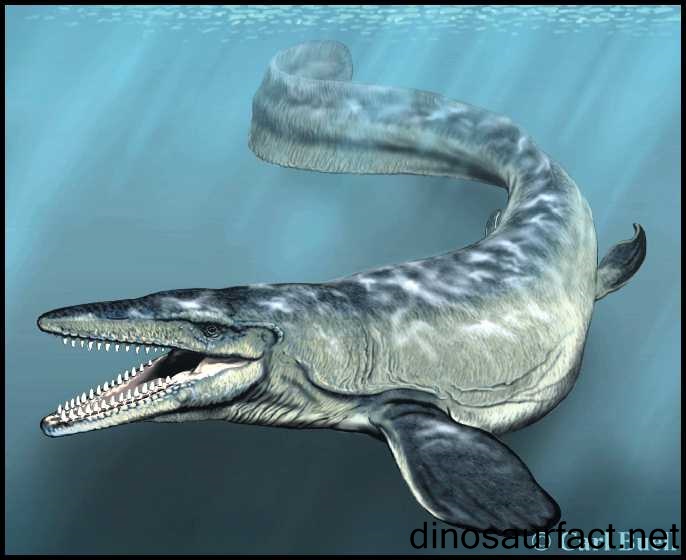 Hainosaurus is an extinct dinosaur species that evolved from the family of the mosasaur species of lizards and they got this named because of the Haine river, where they known to have lived. They were among the largest mosasaur dinosaurs and measured up to 15 metres or 49 feet in length. Thus, the hainosaurus species came under the top predators of the dinosaur era. These dinosaurs were known to prey on turtles, other smaller species of dinosaurs, fish and sharks. The hainosaurus species of dinosaurs were discovered during the period of the 1960s. They were believed to have lived about 200 million years ago. So they were upheld to be a very distinct species of dinosaurs. Their fossils were of utmost importance to researchers and dinosaur experts. So, every piece of their bone gave the researchers a dimension to look at the species. The hainosaurus were classified under the animalia kingdom, under the phylum of chordata, sauropsida class, squamata order and scleroglossa suborder. There were known to have belonged to the Mosasauridae family and Tylosaurinae subfamily under the genes name of hainosaurus. The hainosaurus had an elongated body which was perfectly built for agility and speed under water. They had flippers along the sides which were like fins. Their tail was also curved in the form of fins. This allowed them to swim very fast and swiftly in water. They had a sharp snout with sharp teeth as they evolved from the mosasaur species which, everyone knows were known to have sharp teeth to tear apart prey. The hainosaurus were one of the most strong and dominant aquatic animals in those times. They had the greatest built for water life. They emerged as one of the largest and most feared dinosaur species. The fossils of these dinosaurs indicated that they were built completely for aquatic life. They were not able to go on land as they had no limbs, but a pair of fins. These dinosaurs were quite slim and had torpedo like body to get that speed to pierce through the water. The hainosaurus were viviparous which meant that they bred their eggs inside their bodies. They had to lay eggs in water as they were not able to go on land. But this thesis was not completely satisfactory as their fossils also indicated that they gave birth to young ones. Their pelvic bones displayed that they given birth instead of having eggs. The sample was found in related types of remains and with some form of transformed developmental periods in and around the same locality. Hence, it is assumed to keep up as an ovoviviparous model. But, the fossils of the female hainosaurus dinosaurs showed a sign of having foetuses inside the lower sections of the thoracic cavity. Hence, there were a numerous amounts of facts claimed regarding these dinosaur species by research on its fossils. But, a few of the theories are still mystifying. The Hainosaurus developed in the dinosaur era and reigned as the water devils. They were well-built and had all the armour to be a feared predator. |
LEXOVISAURUS
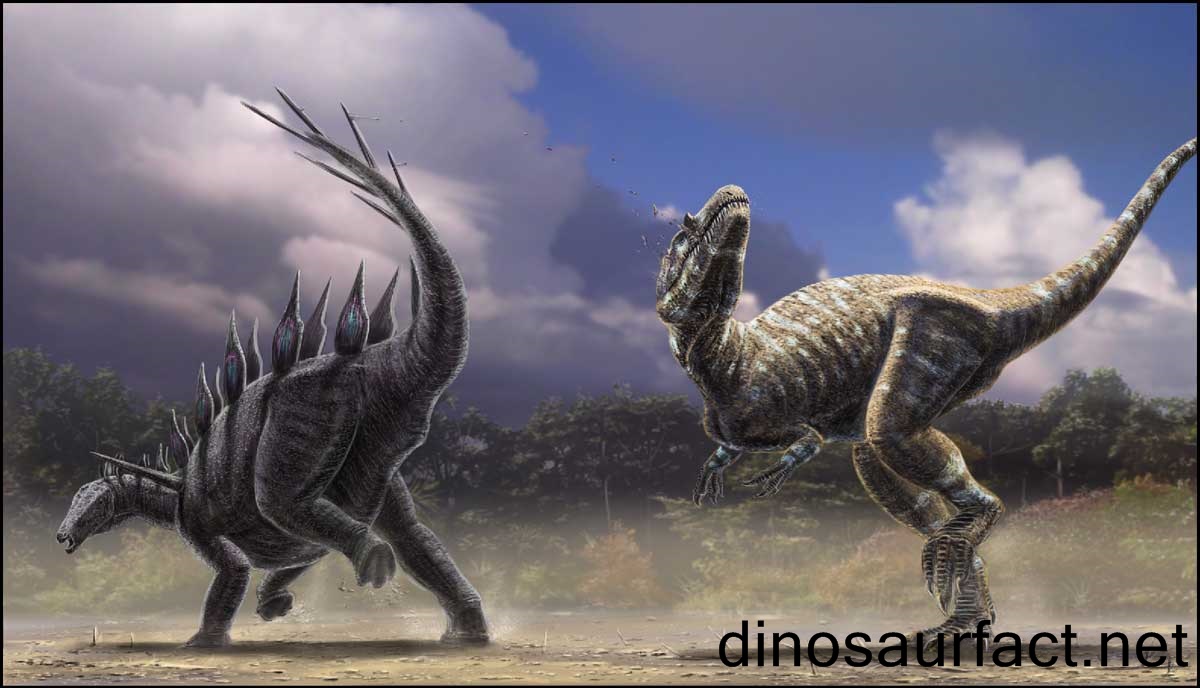
Lexovisaurus - The Dinosaur with Plates
Lexovisaurus is a dinosaur that had a medium size with enough plates on the body. They were found sometime during Middle to Late Jurassic era. They were named Osmosaurus in the beginning. But later on they were again renamed as Lexovisaurus. The name Lexovisaurus means Lexovian lizard. This again comes from the Celtic culture. Their fossils show them to be a member of the stegosaur family. These were group of herbivorous dinosaurs. They were primarily found in the Northern Hemisphere. Their fossils were found all across China , England and North America .
Not much is known about them. The remains of this species were found in England and France . In the year 1957, Robert Hoffsetter named them Lexovisaurus. They were named after a tribe which used to inhabit the same place. This tribe was called the Gallic tribe.
DINOCEHPALOSAURUS
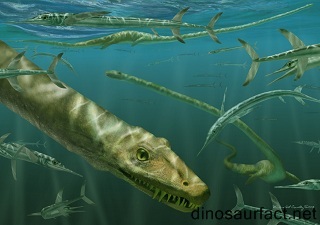
Dinocephalosaurus is a genus having long neck. These are found in the Triassic seas many billion years ago. The name Dinocephalosaurus means terrible headed lizard. The skull of this specimen was known to be discovered near xinmin in Guizhou province. Later in the same place another specimen with head and the postcranial skeleton without tail has been found. First record of discovering this specimen was carried out in China where not only the specimen of this dinosaur, but the specimens of some other dinosaurs were also found.
Dinocephalosaurus can be closely compared with that of the Tanystropheus as both these are protorosaurus having long neck, which is twice than their bodies. The length of the total body is half of the length of the neck. The classification of Dinocephalosaurus is as follows:
Dinocephalosaurus is known to have belonged to animalia kingdom, chordate phylum, reptilian class, archosauromorpha infraclass, prolacertiformes order, tanystrophidae family and dinocephalosaurus genus.
From the skeleton of the dinocephalosaurus the following information were found by the researchers:
Dinocephalosaurus has a minimum of 25 cervical vertebrae making the neck long to approximately a length of 1.7m where as the body is approximately 1m. The long neck in the Dinocephalosaurus is used to capture the prey. Dinocephalosaurus is different from the other protorosaurus as it is fully aquatic, but it lays its eggs on the land. Dinocephalosaurus retain the juvenile characters even in the adult stage. This means that it will retain its character even after it grows.
The studies on the Dinocephalosaurus revealed that the Dinocephalosaurus lived in the shallow murky water of the sea. It is believed that the Dinocephalosaurus take fish and squid as its food. As the Dinocephalosaurus lives in the shallow water its long neck allow it to approach the prey easily. Dinocephalosaurus has a unique strike capability that by flaring its cervical ribs by creating a vacuum it can increase its esophagus volume. All the cervical ribs are articulated near the anterior end of the cervical vertebrae this makes it to have pronounced transverse processes for muscle attachment which helps to flare out its cervical ribs. This makes the Dinocephalosaurus to prevent the creation pressure wave by which the fish will get alerted. And the Dinocephalosaurus can grab the prey and it is possible to hold it with the fangs on its upper and lower jaws. It is believed that the Dinocephalosaurus is able to swallow the whole prey which it captures.
According to studies and researches, the Dinocephalosaurus stays in the shallow murky water and the entire body is being rested in the water. And the neck of the Dinocephalosaurus is swiftly lifted over the water and it strikes the fish which pass over and it captures the fish. The researches state that Dinocephalosaurus is a poor swimmer. The flattened torso, and the skull having the eyes on the top of its head and the upward curving of the snout are the remarkable features which make the Dinocephalosaurus to have a lie in wait style of capturing prey.PROCMPSOGNATHUS
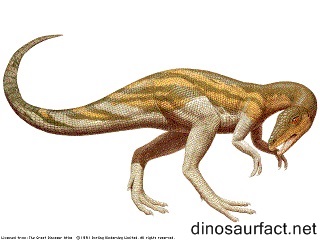
Procompsognathus, when first discovered in Germany & described in 1913, was regarded as an ancestor to the 3 foot Compsognathus, which held the title for smallest dinosaur until the discovery of Microraptor, a pigeon-sized gliding Dromaeosaurid. It is now thought that Procompsognathus does still belong in the Coelurisauria order, but the crushed fossil does not supply enough information to classify it further. Procompsognathus' only fossilized remains, named SMNS 12591, consists of a crushed & fragmented neck & tail, with the arms & hips badly damaged as well. The supposed head pointed it towards being a Coelophysid, but it is now thought to be a different animal's, pushed close to the Procompsognathus' body. The dinosaur Procompsognathus Triassicus features heavily in & was popularized by the first Jurassic Park novel, however they were depicted as similar to birds, while actually having less relation to them than T. Rex which was made out to lumber slowly, nothing like a bird. Michael Crichton also scripted the dinosaurs as poisonous, based on no fossil evidence.
EFAASIA
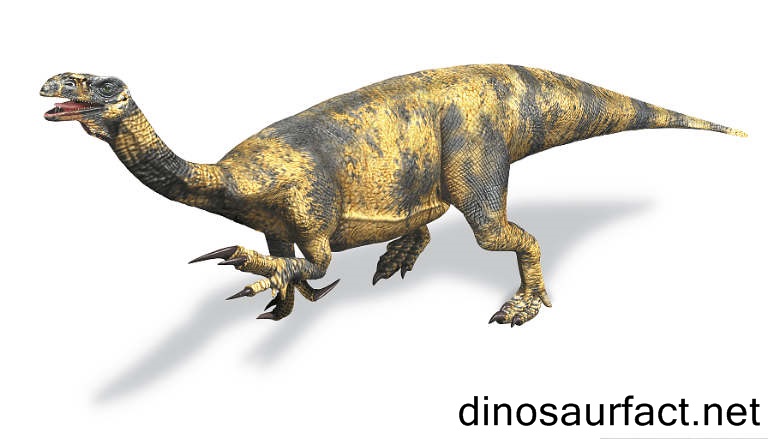
The Efraasia herbivore dinosaur was first discovered in Baden-Wurttemberg, Germany by Eberhard Fraas.
Efraasia's Fossils have been identified incorrectly, at least, four times in total. Originally these Efraasia fossils were named under the Rauisuchian family as a Teratosaurus(not a Efraasia), named by Friedrich Von Huene in 1908. Rauisuchians were reptile predators in the late triassic Period. On a closer look at the Rauisuchians and the Teratosaurus by a Eberhard Fraas, he found that the fossils more closely resembled a Thecodontosaurus. In 1932 it was mentioned to be a Paleosaurus..
In 2002, even through it was believed that portions of the fossils were a juvenile Sellosaurus, it was identified as a new species (Efraasia).
THECODONTOSAURUS
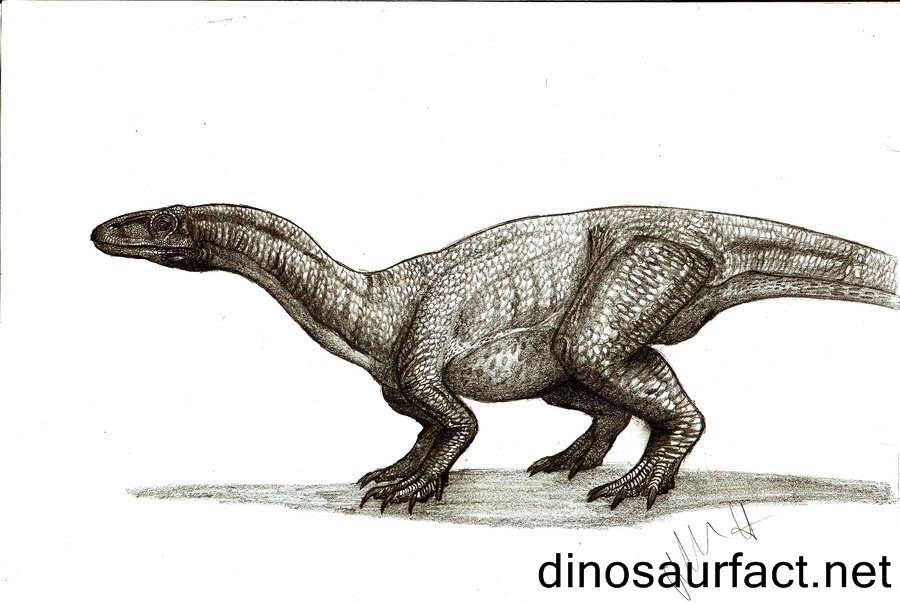
The Thecodontosaurus meaned socket toothed lizard. Fossils for this Triassic dinosaur were found in South England and Wales. The first fossils of the Thecodontosaurus was destroyed by bombings from Germany in WWII in 1940. More skeleton fossils had been found what was thought in Australia, but probably from England instead.
The Original classification of Thecodontosaurus was a Prosauropoda which was in 1998. but shortly after it was realized that this dinosaur should've been under the Sauropod classification because this dinosaur existed during the timeline where a prosauropod classification was created. Thecodontosaurus just was a little too primitive to fit under the Prosauropoda category.
The Thecodontosaurus was about 1.3 meters long, with a short neck, large skull, large eyes, and leaf shaped teeth. This herbivores hands and feet each had five digits, the hands were long and rather narrow with an extended claw on each. The front limbs were also much shorter than the legs, and the tail was much longer than the head, neck and body put together.
There has also been a major claim that this dinosaur is actually an already described different dinosaur called Pantydraco.
EONATATOR
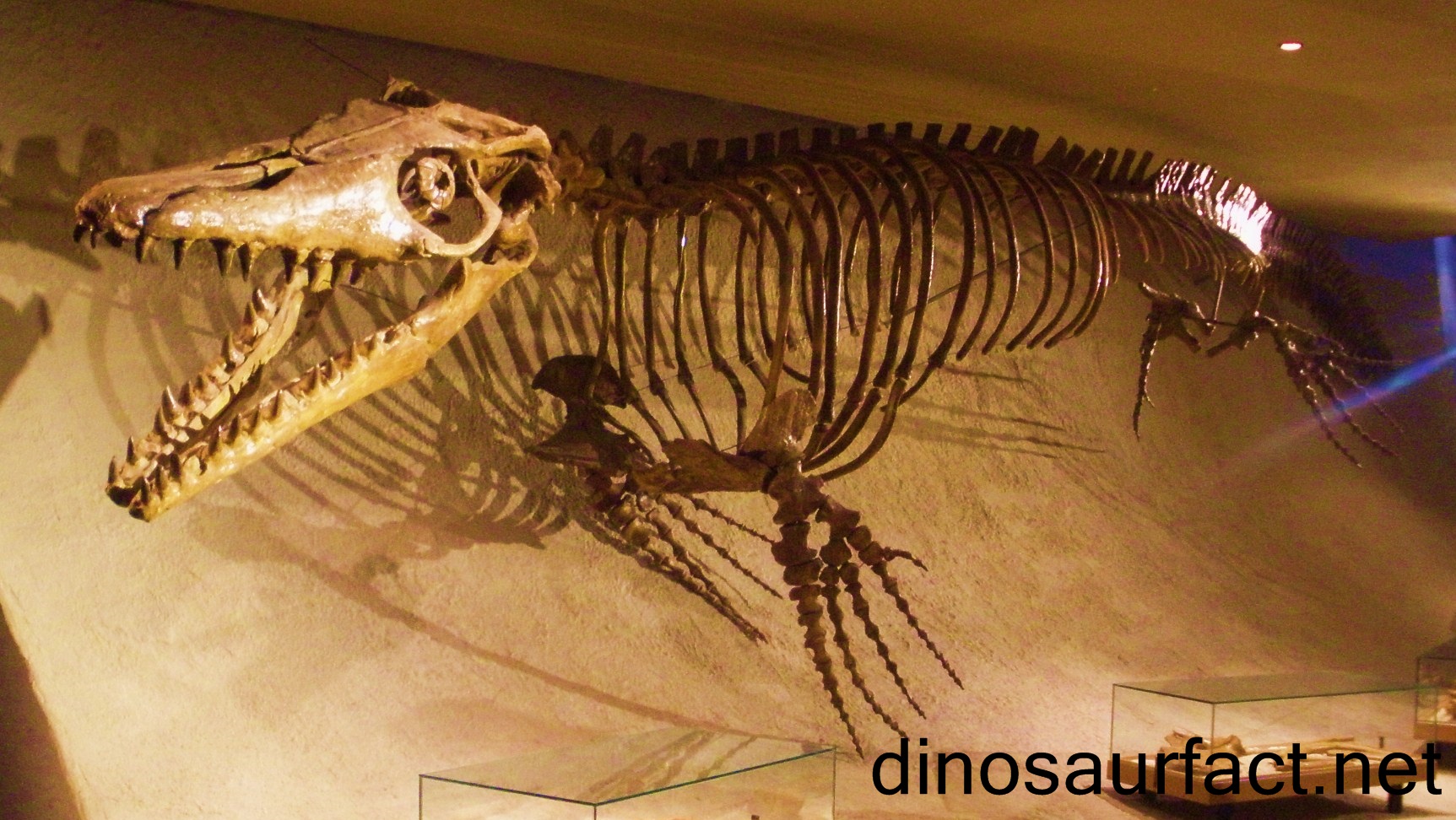
Eonatator is the genus from the subfamily Halisaurine. It is found that the Eonatator lived in the upper cretaceous of Europe and North America . It is the taxon that was generally includes within Halisaurus, but it is placed in its own genus. The name Eonatator in Greek means “dawn swimmer”. This genus is believed to found in the Kristianstad Basin of southern Sweden . The only species found in this period is E.aternbergii. This species is named after the scientist Charles h. Sternberg and his son Levi, as they discovered this specimen in the Niobrara Chalk during the year 1918.
The classification of this Eonatator is as follows:
Eonatator is classified under the kingdom Animalia, under the phylum chordate, class sauropsida and order squamata. It is also classified under the family Mosasauridae and subfamily Halisaurinae and genus eonatator.
Similar to many mosasaurs this genus also has a complicated taxonomic history. The specimen found was nearly a complete skeleton and this was originally referred to the genus Clidastes by the scientists Wiman and then it was referred to Halisaurus by the scientist Russell. And this made that the taxonomic history as the Clidastes. Sternbergii became as the Halisaurus.sterbergii. And during the late 80s the paleontologists suggested that H. Sternbergii belongs to its own genus. Scientists Bardet has explained the ambiguous characters of Eonatator and according to them the lateral suture of Eonatator were ending in the ninth maxillary teeth.
It is evident from the research conducted that these animals have the long tail. That is the length of the tail of these animals is of around 40% of the length of the head and trunk. The caudal vertebra of these animals is greater in its length. That is the length of the caudal vertebra is greater than its width.
The Eonatator femur length is almost twice that of the distal width. That is the length of the femur is long. These dinosaurs were known to have had smooth triangular table extending posteriorly. These animals bear circular foramen of a medium size, and it is located twice from the frontal parietal suture. In Eonatator the foramen is surrounded anteriorly and posteriorly by two parallel ridges. According to the Researchers, Eonatator would have had rounded quadrate. The vertebral column of Eonatator has seven cervical vertebrae. Eonatator has twenty four dorsals. These animals are characterized by four pygals.
There are twenty eight median caudals in these animals. In Eonatator, there are at least forty one terminal caudals. The length of the humerus in the animals of the genus Eonatator is approximately 2.5 times that of the distal width. The research studies reveals that Eonatator is the sister group to the clade Halisaurus. It is represented as the most basal known mosasaur taxa. Among the small mosasaurs Eonatator was one. The length of the typical adult Eonatator is around 2.65 meters. Eonatator generally feeds primarily on the fish and smaller marine reptiles.
sábado, 26 de diciembre de 2009
IGUANODON
The Iguanodon |
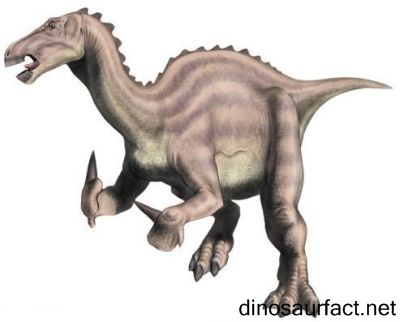
One of the most unique features of the Iguanodon had a big horny spike as thumbs. Chances are this was a defense mechanism from predators that the of the Early Cretaceous period like the Inventor. Some scientists argue thinking it could've been used for climbing but that's unlikely because of the size of the creature. |
jueves, 3 de diciembre de 2009
PLIOSAUR
OVIRAPTOR
 Today's birds sit on nests. Prehistoric creatures may have done this, too! in the 1990s, a fossil of this dinosaur was found on a nest. Its wings were covering its eggs. Scientists think the creature was keeping them warm with its feathers. It used the claws at the end of its wings to protect itself.
Today's birds sit on nests. Prehistoric creatures may have done this, too! in the 1990s, a fossil of this dinosaur was found on a nest. Its wings were covering its eggs. Scientists think the creature was keeping them warm with its feathers. It used the claws at the end of its wings to protect itself.

